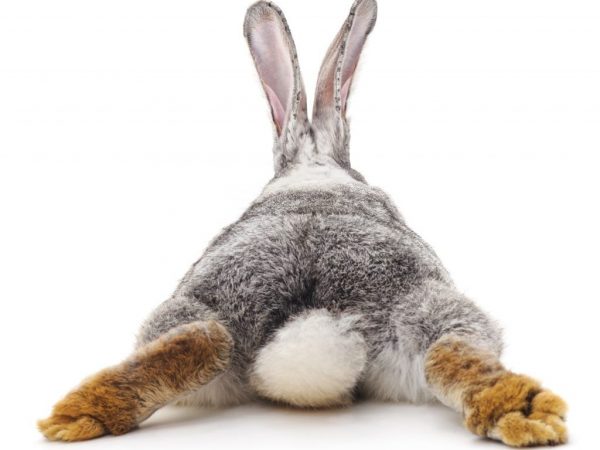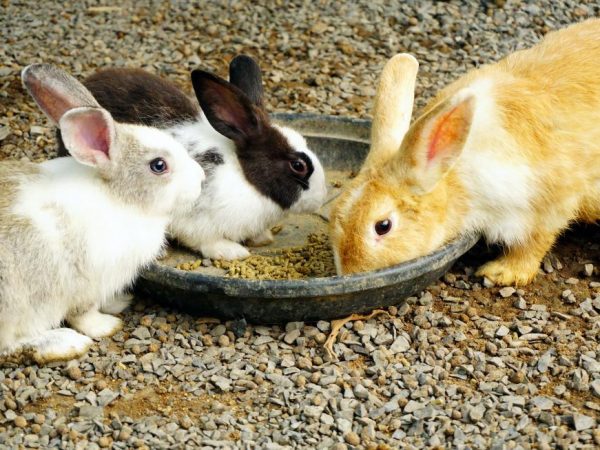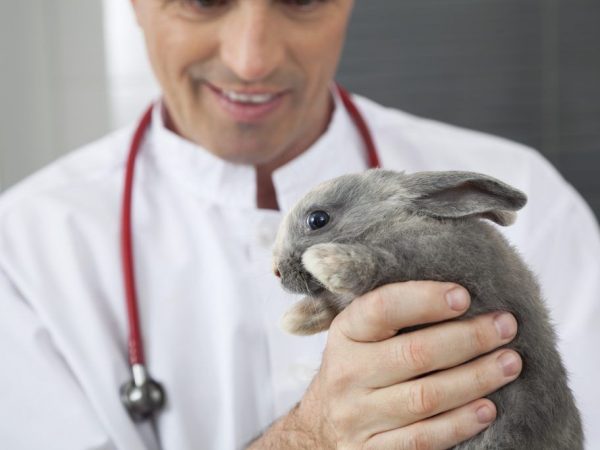Wet tail in a rabbit
No one is immune from diseases: neither people, nor animals, nor birds. Rabbits are also susceptible to various kinds of infections and diseases. Novice and not too experienced farmers often fall into a stupor when they see a wet tail on a rabbit.

Wet tail in a rabbit
In this case, you do not need to panic: the first step is to figure out the reasons for the appearance of such a symptom in a pet. The most important disease is most often colibacillosis. This disease is popularly called wet tail. Colibacillosis is an infectious disease caused by colibacillus. This disease is accompanied by enteritis.
Colibacillosis symptoms
The main symptom that gave the popular name (wet tail or wood lice) to this disease is diarrhea in rabbits.
Watery discharge under the tail is a warning sign, which means that something is wrong with the animal. In addition, there are a number of other, equally important symptoms that you need to be able to recognize. Among them:
- loss of appetite;
- lethargy and inactive behavior for a long period of time;
- passivity and alienation from other animals;
- watery discharge (feces) under the tail.
Do not get scared right away and stuff the animal with medicines. Although colibacillosis can have very serious consequences, first of all it is better to make sure that the diagnosis made by yourself is correct, because diarrhea can be caused by colibacillosis, as well as other intestinal diseases or banal indigestion in rabbits.
Having shown the animal to the veterinarian, the farmer most often receives recommendations on nutrition, conditions of detention and the selection of medicines for his wards.
If the examination by the animal doctor still did not take place, you can try to cure the animal yourself, because the principle of treating intestinal diseases is practically the same. It is important to approach this matter with all responsibility so as not to cause additional harm to the animal or worsen its current condition.
How the disease is transmitted
This disease is contagious, which means it can be transmitted to other individuals on the farm. Colibacillosis is transmitted by airborne droplets and through the use of common household items: dishes, drinkers, nests for sleeping.

The disease is transmitted by airborne droplets
To protect the rest of the brood from wet tail infection, it is better to take the following set of measures:
- It is best to isolate the infected rabbit while it heals and recovers. This will prevent the infection from entering the organisms of other animals.
- If isolation is not possible (not enough space or funds), more attention should be paid to hygiene in the room where the rabbits are.
- It is worth thoroughly washing and disinfecting the feeders and drinkers.
- If possible, you should limit the use of common utensils by the infected representative with the rest of the brood.
- When treating, include vitamins that strengthen immunity in the diet of the rest of this family.
Don't worry.This disease will not be able to affect all individuals if treatment is started on time and all precautions are taken. In the initial stages, it is well curable, and the body of rabbits is able to fight the infection that has got into it for some time.
But if the disease is still present, the rabbit will have to be treated, there is no way to go anywhere. When choosing a course of medications on your own, you need to study a considerable amount of literature on this topic.
Colibacillosis treatment
In fairness, we note that this disease affects not only rabbits: rodents (mice, hamsters, chinchillas, guinea pigs, etc.) suffer from infectious diarrhea much more often than representatives of this family.
The treatment of this disease should be complex: it should consist of the selection of antibacterial pharmaceutical agents, regulation of nutrition and care for the environment of the sick animal. Let's start with pharmaceutical preparations:
- Oral administration of Tetracycline. The dosage should be selected individually by the veterinarian.
- You can use subcutaneous injections. To do this, use a drug called Cloramphenicol.
- Consumption of Metonizadol with meals. It, like Tetracycline, must be diluted with water.
- You can also treat a wet tail with Ersefuril (Nifuroxazide). He, like the previous drugs, is available commercially at ordinary pharmacies. You need to give this medicine 2 or 3 times a day.
- Vaseline oil can flush toxins from the animal's body.
- Papaverine or No-Shpa can be a salvation not only for people, but also for animals: they make spasms less painful in rabbits or eliminate them altogether.
- A glucose solution can be used. It is injected. The procedure is recommended to be carried out daily twice or thrice.
- You can include saline (sodium chloride) in the rabbit's drinking diet. It is necessary to give it to drink a little to restore the body.
- Linex also helps to restore the intestinal microflora. You can get it at your nearest pharmacy.
It is important to note that all these methods cannot be applied simultaneously, because this can cause serious disruptions in the functioning of the vital systems of the rodent. You should choose one of the proposed options and follow it. It is best to seek advice from a veterinarian.

Treatments for colibacillosis in rabbits
The next point is to adjust the diet of the animal.
It should include foods rich in vitamins and exclude elements that induce indigestion. Recommendations for the composition of the diet for rabbits during the treatment period:
- it is worth excluding raw fruits and vegetables from the pets menu so that watery discharge ceases to appear on the legs and tail;
- it also requires a reduction in the consumption of fatty acids by sick animals: for this it is necessary to increase the percentage of hay and grain feed;
- the farmer is obliged to ensure that his wards have access to clean, fresh and high-quality drinking water; he must always monitor the condition of the feeders and drinkers, regularly disinfect them;
- after treatment, it is recommended to water the rabbits with drugs to restore the intestinal microflora in order to prevent its weakening and, as a result, the development of new diseases.
Among other things, if a rabbit has a bottom, tail or paws in feces, you need to carefully look after it and ensure that the animal is properly cleansed of its body so as not to cause the development of skin diseases, because for a rabbit its skin and fur are the main heat regulators.
Preventive measures
It is also worth following the general recommendations for caring for a sick rabbit. This will help to avoid massive infection and speed up the process of treatment and recovery of the patient. Here are the main ones:
- The cage must be dry and clean. Excessive moisture in the place of residence of rabbits is a favorable breeding ground for bacteria.
- It is better to isolate the infected rabbit: this way the biting midge will return to normal faster, the colibacillosis will stop developing. If you still have nowhere to put it, it is important to take care of disinfecting the cage several times a day.
- The condition of the feeders and drinkers must be perfect. To do this, they need to be cleaned daily or every 2 days.
- When treating with drops, they need to be dripped into the patient's mouth, and injections should be made into the withers (rabbit's neck).
- The farmer should wash his hands after contact with an infected animal to avoid becoming a carrier of the disease.
By following these simple rules, you can easily avoid spreading the infection to other pets. Colibacillosis can lead to the development of other diseases, for example, stomatitis. The weakened body of the animal cannot fight all incoming infections, so it is better not to delay the process of treatment and recovery.
For the prevention of colibacillosis, it is necessary to look after your wards carefully, choose high-quality food for them and maintain cleanliness in their place of residence. Proper care not only helps to avoid many diseases, but also improves the performance of animals, as a result of which their productivity increases.

